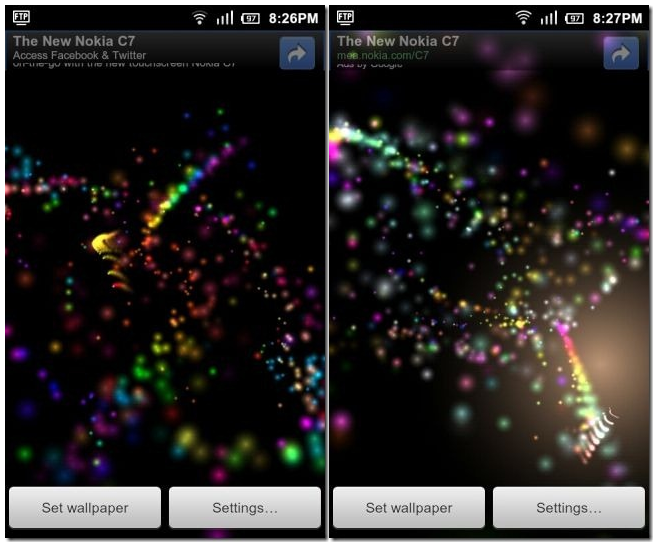

- #SAMSUNG LIVE WALLPAPER BATTERY FULL#
- #SAMSUNG LIVE WALLPAPER BATTERY ANDROID#
- #SAMSUNG LIVE WALLPAPER BATTERY SOFTWARE#
Live wallpapers can look really cool and it would be a shame not to use them when the battery effect may be so little. Check out this chart from AndroidBeat to see the difference over an eight-hour period.
#SAMSUNG LIVE WALLPAPER BATTERY FULL#
The estimated standby time remaining was also the same. If you were to extrapolate this over a day, then you may see some more significant numbers, but if it doesn't have a perceptible effect at full brightness over 30 minutes purely on that screen, I'd be surprised if its impact were dramatic during real-world use. The battery percentage after 30 minutes is the same despite the live wallpaper. It’s a crude test, but you get the basic idea. The static wallpaper also consumed 6% battery in the same time. The live wallpaper consumed 6% battery in 30 minutes. Then I repeated the process with a static wallpaper. I then switched on the device and took a screenshot as soon as the homescreen loaded, and just after the display turned off 30 minutes later. I put a Sony Xperia Z3 in airplane mode at 100 percent brightness and set a live wallpaper on the homescreen. I then set the display timeout to 30 minutes, switched the phone off, and charged it to 100 percent. In some cases, if the live wallpaper doesn't use other sensors on your phone (such as the gyroscoper), or pull data from your weather app, the additional battery life consumed is negligible. Live wallpapers do reduce battery life more than static wallpapers, but the extent to which they drain battery life varies. Myth 3: Live wallpapers dramatically reduce battery life
#SAMSUNG LIVE WALLPAPER BATTERY ANDROID#
Meanwhile, Symantec's internet security report for 2015 claims that in 2014 it found that "17 percent of all Android apps (nearly one million total) were actually malware in disguise," and Pulse Secure's 2015 mobile threat report says that the Android platform accounts for "97 percent of all mobile malware developed".Īndroid's security threats are growing year on year, so stay safe and only interact with content from trusted developers and sources. Of the Android platforms threats, Kaspersky stated: “More and more – millions of brutal attacks – not safe”, and that iPhone attacks are “less probable because it is very difficult to develop malware for iPhones”.Īndroid security threats are real and becoming more widespread. “Windows is a much better operating system than the rest (iOS, OS X and Android) and Microsoft is tightening it up much more in the next version,” he said.
#SAMSUNG LIVE WALLPAPER BATTERY SOFTWARE#
With that in mind, Android's prevalence (more than one billion devices are currently running the software) does mean it is a target for scam artists, and for this reason, Android is one of the least safe platforms in the world.ĬEO of security group Kaspersky Lab, Eugene Kaspersky, spoke to iTWire about current software threats. Myth 2: Android devices are safe from malwareĪndroid security threats do tend to be exaggerated, and it’s no surprise that many of these exaggerations come from security companies that have security software to sell. There's no need to worry about fully charging your Android on first use. That said, any inaccuracy usually corrects itself after a number of charges anyway. After a complete charge, the battery percentage that your smartphone shows could be closer to the reality. One benefit that fully charging a phone before its first use may have, however, is calibration. This applies to the majority of modern smartphones, which use similar lithium batteries. You can use them out of the box,” says the Battery University website, an educational resource offering advice on charging best practices. “While some older rechargeable battery types, like Nickel Cadmium (NiCd) and Nickel Metal Hydrate (NiMH) need priming, Lithium-ions in general (including Li-ion Polymers) do not need priming. This isn't a bad practice, but it’s not actually essential, and failing to do so will not harm your phone. We are often advised to charge a new device fully on first use, something that's is referred to as “priming” the battery. Myth 1: You need to charge your device fully on its first time of use We're here to help you separate the fact, from the fiction.


 0 kommentar(er)
0 kommentar(er)
